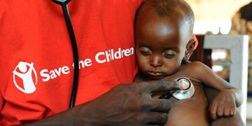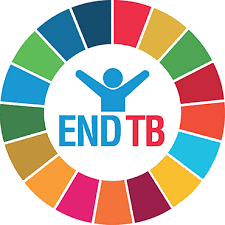
Water is Food
Because nothing can grow without water, all of our food, and therefore our very existence, depends on farmers having access to the water they need for their animals and crops.
Water covers about 71% of the Earth's surface, but only 2.5% of the Earth's water is fresh and suitable for drinking, agriculture, and most industrial uses. Agriculture is the largest consumer of the world’s freshwater resources, accounting for over 70% of consumption.1 But that share needs to be significantly reduced. Agriculture must shift to much more water-efficient crops and practices if we are to feed the 10 billion people estimated to be living on our planet by 2050. The great challenge for agriculture in the future will be increasing food production with less water.
Water is Green. Water is Blue.
Did you know? Green water refers to water that is held in the soil and available for direct uptake by plants. It is the fraction of rainfall that is stored in the soil. About 60% of global food production is produced in rain-fed agricultural systems dependent on green water. Blue water, on the other hand, is water taken from rivers, lakes, aquifers and reservoirs and is used for irrigation. Globally, irrigation is practiced on about 20% of total agricultural production area, accounting for 40% of food production. In sub-Saharan Africa, only 4% of agricultural production area is irrigated. More than 70% of food in sub-Saharan Africa is produced in rain-fed systems.2
Under Stress
Rapid population growth, urbanization, economic development, and climate change are putting the planet’s water resources under increasing stress. At the same time, freshwater resources per person have declined 20% in the past decades and water availability and quality are deteriorating fast due to decades of poor use and management, pollution, overextraction of groundwater, and climate change.3 The availability, absence, or scarcity of safe clean water continues to be one of the most pressing concerns that many of the world’s people face. Today, 50% of the world’s population — around 4 billion people — live under highly water-stressed conditions for at least one month of the year.4

World Food Day 2023: Water is Life. Water is Food
This coming Monday, October 16th is celebrated as World Food Day. This year, the focus is on water as the foundation for life and food. World Food Day 2023 aims to raise awareness about the importance of managing water resources wisely.
What Can You Do?
Every drop counts, and your actions, big or small, can make a difference. What we eat, and how that food is produced affects water. We encourage you to explore the resources in the Dig Deeper section for ideas you can implement to save and protect water.
Also, if you have not yet done so, World Food Day would be perfect timing for you to send a letter to Canada’s Minister of International Development telling him that you care about hunger. Click here for the GRAN Action message with suggested messaging to the Minister.
Dig Deeper...
Watch:
- What Does Water Mean to You? Listen to the voices of people from around the world as they express what water means to them. 2-minute video for World Food Day 2023
- Eight Actions We Can All Take to Save Water 2-minute video for World Food Day 2023
- Groundwater, Making the Invisible Visible Beautiful and informative 3-minute video from UNESCO World Water Assessment Programme
- Catching Raindrops in Africa. Learn about the importance to agriculture of slowing down the movement of water in this 5-minute video from Stockholm International Water Institute.
Read:
- What Can You Do? Explore this page on the UN Food and Agriculture Organization’s website for ways you can make a difference.
- What Water Means for One Farmer in Kenya Meet this young farmer who was once headed to Canada to find a better life but chose instead to remain in Kenya when a new way of using water made him reconsider agriculture as a career.
- Water Smart Agriculture Read about Care International's work with smallholder farmers to integrate soil and water management to increase agricultural productivity and conserve natural resources.
- Water Management in Agroecology Read this infosheet from Action Against Hunger to better understand the principles and practices of agroecology that allow for improved soil quality and better water retention, leading to increased crop yields.
- What is Fresh Water? Read this informative article from the International Institute for Sustainable Development (IISD) Experimental Lakes Area, a worldclass freshwater laboratory here in Canada that is building capacity for freshwater science and policy action in Canada and around the world.
[This is the nineteenth installment in GRAN's Small Sips series on The Right to Food.]

http://grandmothersadvocacy.org


